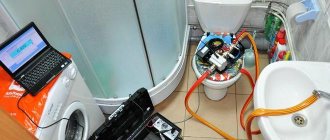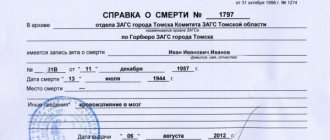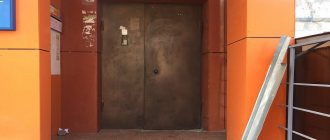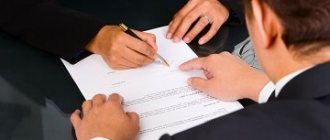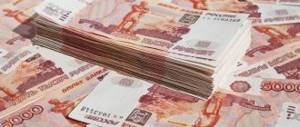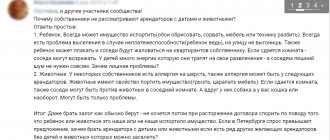Water for apartments and private houses - everything is becoming more expensive. If you pay according to the average, then the price simply goes through the roof. Even if you don’t use water that often, you will have to pay a tidy sum for one registered person, but now imagine - if three or four people are registered! This is already 1500 - 2000 rubles per month, of course, it all depends on the region (the price varies). In general, the government forces us to install water meters, this way we can save a tidy sum. However, many people think that installing a meter is quite difficult, although this is not true! Personally, I installed it with my own hands for my mother in a private house. Today I want to tell you this step-by-step instructions, there will be a video at the end, so read and watch...
A little background - my mother has a private house, 4 people are registered, if you pay on average, it comes out to about 1200 - 1300 rubles per month (I don’t remember exactly the tariff now). But a cube of cold water costs only 22 rubles. However, the point is that only two people live, and very little water is consumed, especially in winter! Maximum 5 - 7 cubes, that is - 7 X 22r = 154 rubles. The overpayment is simply huge! In the summer, of course, watering the garden is involved, but still the benefit, even in the summer, reaches two to three times! Actually, we decided to install a water meter, because the benefits are really obvious.
What you need to know before installation
Many residents of apartment buildings and private households think that special companies handle installations. BUT THIS IS COMPLETELY NOT TRUE! NO ONE CAN OBLIGATE YOU TO INSTALL ANYWHERE OR BY ANYONE. You can do all the work yourself, if of course you can.
However, before carrying out installation work, you need to call your representative office of VODOKANAL (or another company that supplies water to you) and find out all the conditions and recommendations for installation. DO THIS MANDATORY! So that you don’t have to redo it 10 times later.
What recommendations and mandatory items may there be:
- Water meter from certain companies, usually given three to four names
- Anti-magnetic device. Personally, we were not obligated, but a friend in a neighboring town said that it was necessary to install an anti-magnetic option (they were told so at the water utility)
- Mandatory certification
- There MUST BE a coarse filter in front of the meter. So that all the blockage is caught and does not interfere with the operation of the device
Actually, that's all! After installation, you need to call a representative of Vodokanal, he will check the correct installation and seal the meter. After that, you will start paying according to his testimony.
Basic parameters of the counter
Currently, water meters are produced separately for hot and cold water. To find out their acceptable operating range, you need to carefully study the passport that comes with the kit.
In addition, the corresponding indicators can be found on the body of the device itself. Some models are color coded, such as blue or red housing.
Video:
Today you can find universal meters on sale, which are equally suitable for both cold and hot water. As a rule, such universal devices are made in a gray housing.
Also of great importance is such a meter parameter as the diameter of the nominal diameter.
It indicates the dimensions of the pipework and must correspond to the parameters of the pipes in the place where it will be installed.
When choosing a meter, you should also pay attention to its accuracy class, since the error during operation of the device will depend on this indicator.
In addition, when choosing a water meter, you should also check the pressure that the device can withstand when operating in the system.
Among the main operating parameters of the meter that you should pay attention to is also water consumption. It, in turn, is divided into nominal and maximum.
If you install a meter in an apartment whose operating parameters do not match the system parameters, then most likely the device will quickly fail; in addition, its readings may differ from the actual ones.
You should definitely check the expiration date of the device, and also make sure that the seller puts a mark on the date of purchase.
All this will help, if necessary, carry out warranty repairs and avoid problems when registering the device with the water utility.
Only after the meter has been checked can you proceed to install it locally.
How to choose
I will have a separate article about the detailed choice, but for now there are general recommendations. An important recommendation is that each water meter has its own service life (check), usually five years for private houses. The meter has a production date from which 5 years will be counted! Therefore, it is worth taking a “fresh” counter, say, made a month ago. It is not rational to take something done six months or even a year ago, so you are simply bringing the time of verification closer. THIS IS ALSO IMPORTANT TO REMEMBER!
Meters usually come with American connections on the edges (these are detachable connections), the connection is designed for metal pipes, that is, to install on “metal-plastic” or “polypropylene” you need special adapters.
By the way, there are digital options, with an LCD display, but they are expensive! Take the most common ones with mechanical letters; as a rule, they cost 2–3 times cheaper and work more reliably.
DIY installation
My mother has metal-plastic pipes, they were installed a long time ago, so I had to buy adapters. I would like to note right away - IF THERE IS A POSSIBILITY, INSTALL POLYPROPYLENE PIPES IN YOUR APARTMENT! They end up being much cheaper, because adapters, taps and all sorts of connectors cost several times less.
We begin the installation - it is worth remembering that the installation must be in front of the entrance of the pipe into the house, that is, the most extreme point - there is nothing in front of it (no devices).
So we have:
- Connecting elements for connecting to a pipe
- Coarse filter
- I decided to put a tap in front of the meter to shut off the water (if suddenly needed) - by the way, I also advise you
- The water meter itself
Let's start the installation ourselves:
- I cut the pipe and determined the installation location
- I am installing the faucet and the first connecting mount; a coarse filter will be installed in it. There is a special arrow on the body in its direction and it is installed
- Next, install the first American one in the filter, from the meter
- Then the water meter itself. It also has an “arrow” for installation, LET’S FOLLOW IT! This is important: when they come to “seal” it, everything will be checked
- After the second “American” - an adapter for it and a pipe
The instructions are very simple, anyone can actually do it! The main thing is to do everything right.
I have a meter for the month of production in December, but I installed it in January, that is, only one month. Almost all meters have 1 cubic meter of water - this is a test at the factory! He is not taken into account.
Why you need to install a water meter - opinions, reviews and calculations
No one has the right to force you to install water meters: only you can make such a decision. But is it necessary to do this?
Indeed, the temptation to abandon these devices is very great, because their purchase and installation can cost 5-6 thousand rubles. The money is not that small, and there are no fines for the lack of water meters. So is the game worth the candle?
What if you don’t put it?
If residents do not want to install meters, during the first six months after the old devices fail, calculations will be based on the average values for the last 6 months of their operation. But utilities will begin to calculate further accounting of water consumption based on the standards established by local governments. In practice this happens as follows.
First of all, utility service employees take readings from public metering devices, which are usually located in the basement of the building. Next, the total readings of working meters in apartments are subtracted from the obtained values, and what remains is divided first by the total number of apartments without appliances, and then by the number of residents registered in them. If the calculation results do not exceed the standard values, the calculations are considered final, and their result is included in the payment receipt. If they exceed, the maximum figures of the established standards are included in payments.
The procedure for determining these standards is regulated by Decree of the Government of the Russian Federation No. 306 of May 23, 2006. (Last edition dated December 26, 2016.) The volume of water that is approved by the administration of a city or district as the consumption rate per person depends on many factors: the climatic conditions of a particular region, the number of floors of an apartment building, the degree of wear and tear of equipment and the building itself, etc.
For example, in Moscow, the standard consumption of cold water is equal to 6.93 m3, and hot water - to 6.7 m3 per person per month, for a total of about 12 m3. Thus, even if, according to the calculations of utility workers, the residual volume of consumed water exceeds 12 m3 per resident, you will still have to pay the same 12 m3. The numbers are not astronomical - only 600 liters per day: take a shower in the morning, run a bath in the evening, wash the dishes a couple of times. With this standard, it is really not necessary to install meters. In any case, for lovers of water procedures this is definitely of no use.
However, from January 1, 2020, in order to encourage irresponsible citizens to install metering devices, the Government of the Russian Federation introduced special increasing coefficients (PP No. 366 of June 16, 2013). And every year they become more and more. As of the middle of this year it is 1.5. That is, 50% must be added to the existing standards. It turns out that the capital’s water consumption rate is no longer equal to 12, but to 26 m3 per person. But here there is already something to think about.
Profitable or not?
Suppose two pensioners live in an apartment without meters. They are clean people, and they have a lot of free time. How much water can they use in one month? Let's figure it out. Filling a bath is 250 liters. Take a shower - 100 l, wash - 20 l. To wash dishes once, on average, 35 liters are spent, another 45 liters are consumed by a washing machine. It is clear that all indicated values are maximum.
Let’s say each pensioner takes a shower in the morning and a bath in the evening. In addition, they wash dishes 3 times a day and wash clothes once every 3 days. The result of the calculations will be as follows: shower - 200 liters, bath - 500 liters, dishes - 105 liters. Total—805 liters per day. Let's add here a washing machine that is used 10 times a month:
805 l * 30 days + 450 l = 24,600 l or 24.6 m3
A lot, but taking into account the increasing coefficients, the management company will regularly issue bills to these residents, where the total water consumption will be not 24.6, but 48 m\, that is, 2 times more. In this situation, paying the bills will be much more profitable.
At the same time, let’s not forget that the standards are calculated based on the number of registered persons. If one of the pensioners lives without registration, then bills will no longer be received for 48, but for 24 m3. A very interesting conclusion arises: the absence of water metering devices may be justified if half or more than half of the residents are not registered. Moreover, the more such residents there are, the more profitable it is to pay, even at higher rates. Let’s imagine that there are not two, but three pensioners, and only one is registered in the apartment. In this case, water consumption increases by at least 405 liters per day (shower, bath, 1 time - dishes). And this is already an extra 12 m3 per month. But you will still have to pay for 24 m3, although the real consumption is 36.7 m3. As they say, the savings are obvious.
This example is hypothetical. But it illustrates well how much water can be wasted by people who are at home almost all the time and are not used to denying themselves an extra splash in the bath.
Moreover, many of the pensioners are labor veterans, and this allows them to pay for utilities at a 50% discount.
In fact, it very rarely happens that the total water consumption exceeds 8-9 cubic meters per person.
So, a family of three spends no more than 20 m3 per month. A full family with two small children (constant washing, cleaning), as a rule, needs 25-35 m3 or even less. If such a family does not use meters, then it is quite possible that they will have to pay for 96 m3.
From all of the above, it is easy to understand that the only way to justify refusing to install metering devices is to deprive the majority of people living in the apartment of permanent registration. But this is not always possible. The exception is for apartments that are rented: with one registered owner, several people can live in such an area at the same time on a bird's license.
ATTENTION!
Employees of public utility services have the right to report temporarily living eggs that were identified as a result of an inspection of residential premises without meters to the police or the Federal Migration Service.
What else do you need to know
Cases in which a management company can begin to apply standards with an increasing coefficient are strictly stipulated by law. Utility providers have this right if you have not replaced the broken meter within 6 months or have stopped transmitting readings during the same period. Another reason is your refusal to allow housing and communal services employees to check the devices.
Increasing tariffs do not apply if, for a number of reasons, the installation of water meters is impossible. Such reasons may be the officially recognized dilapidation of housing, a malfunction of the water supply network or poor environmental conditions: too high humidity or temperature, constant electromagnetic radiation. Although the likelihood of such conditions occurring is very low.
© Author: S. Vasiliev

